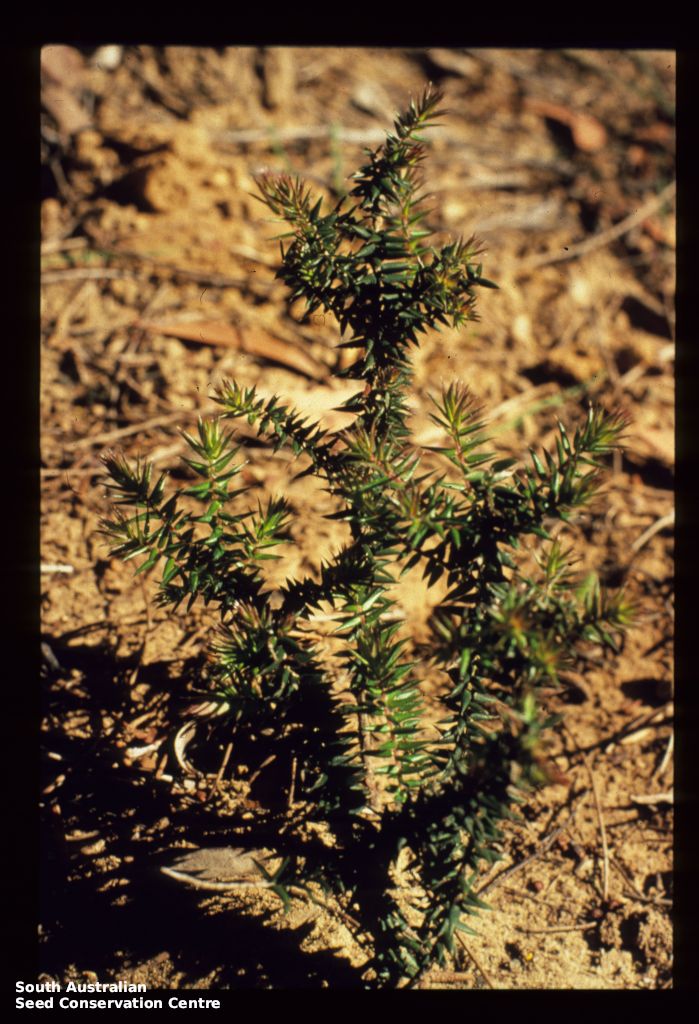
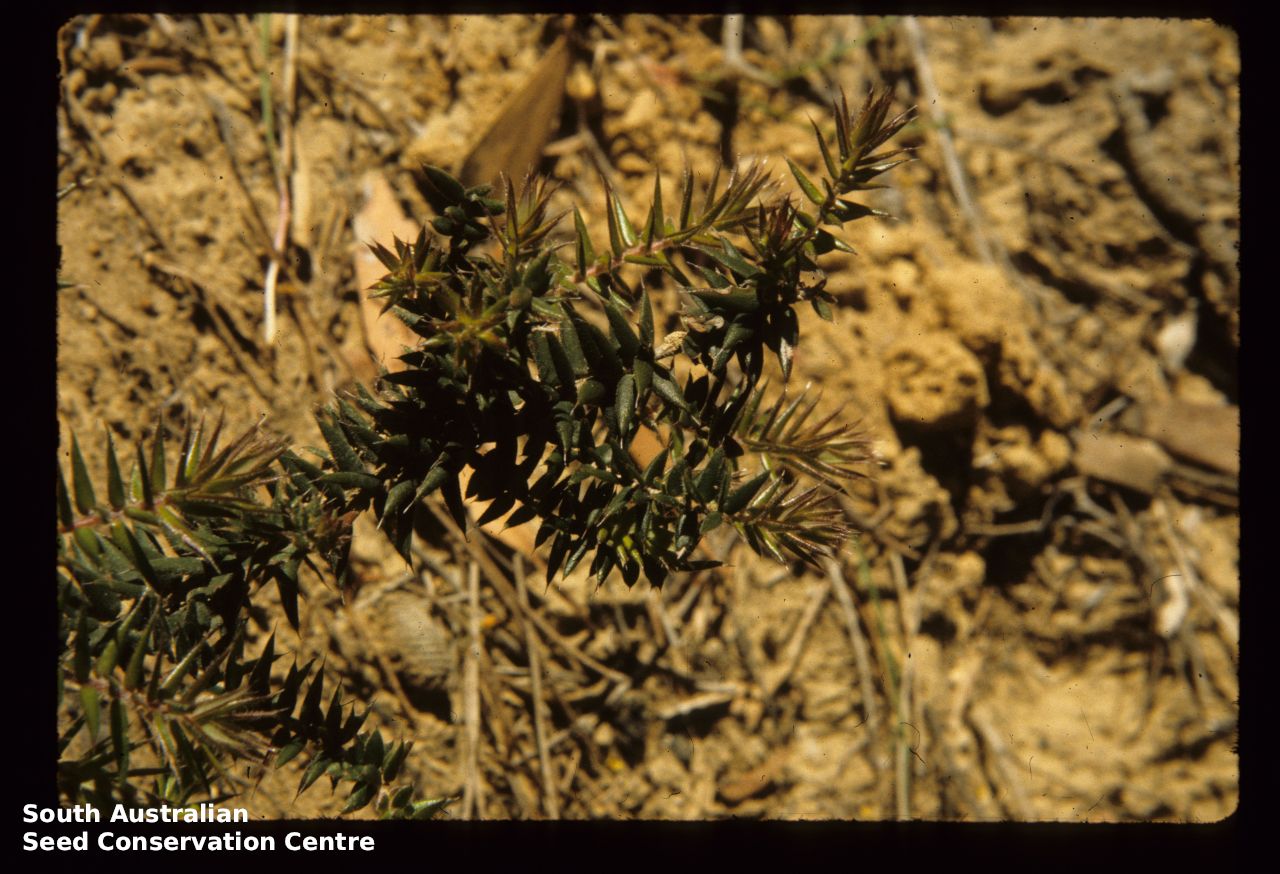
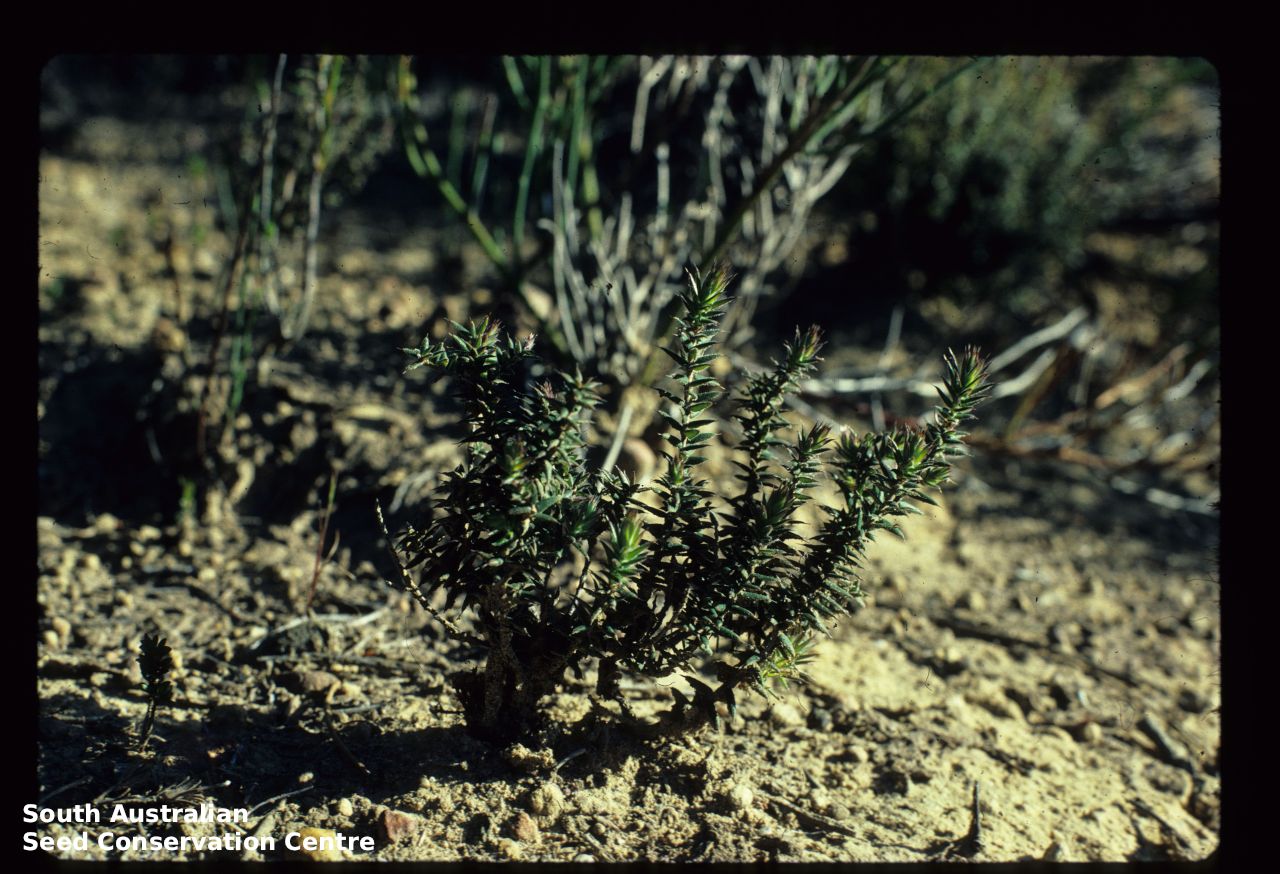
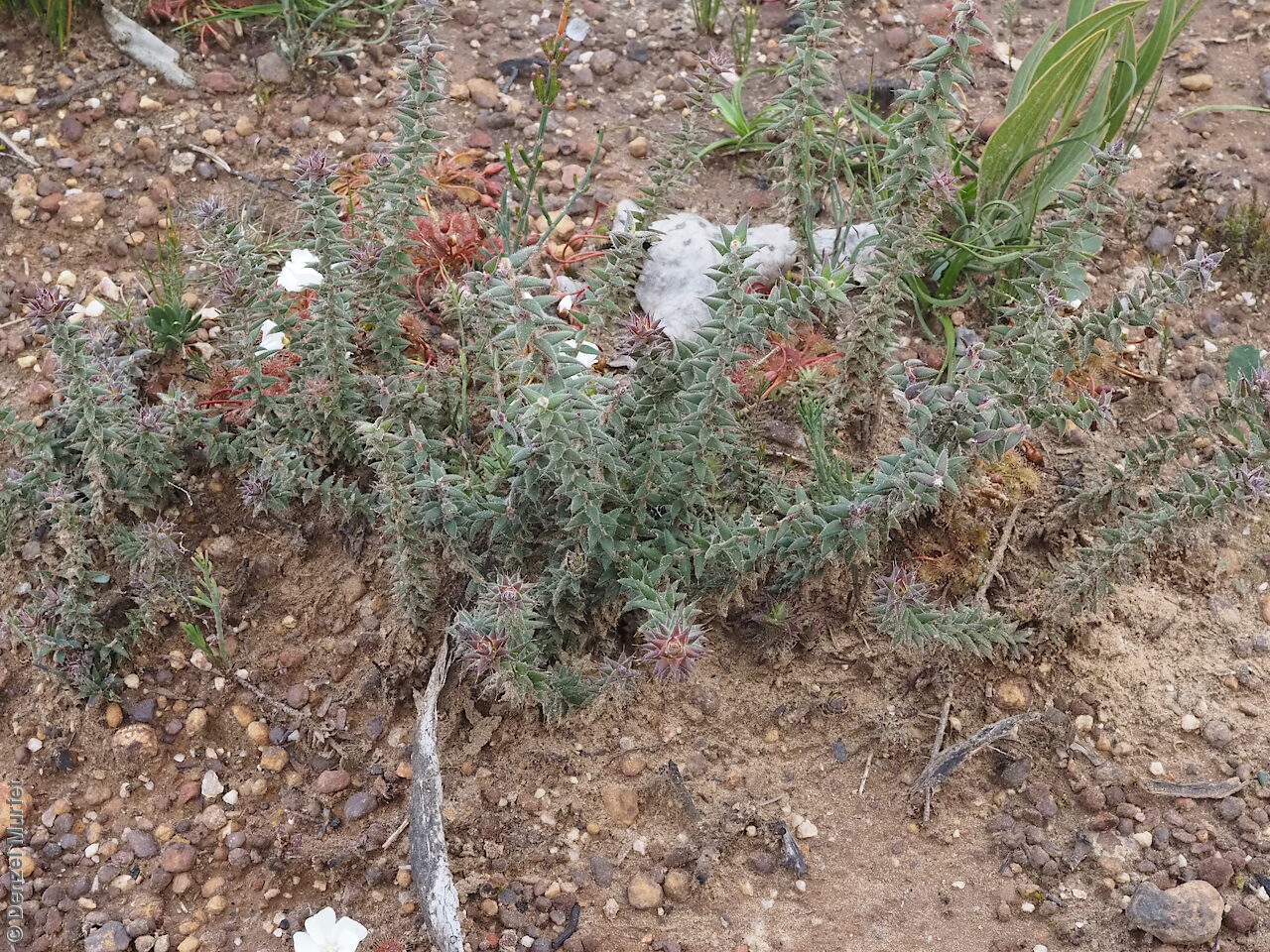
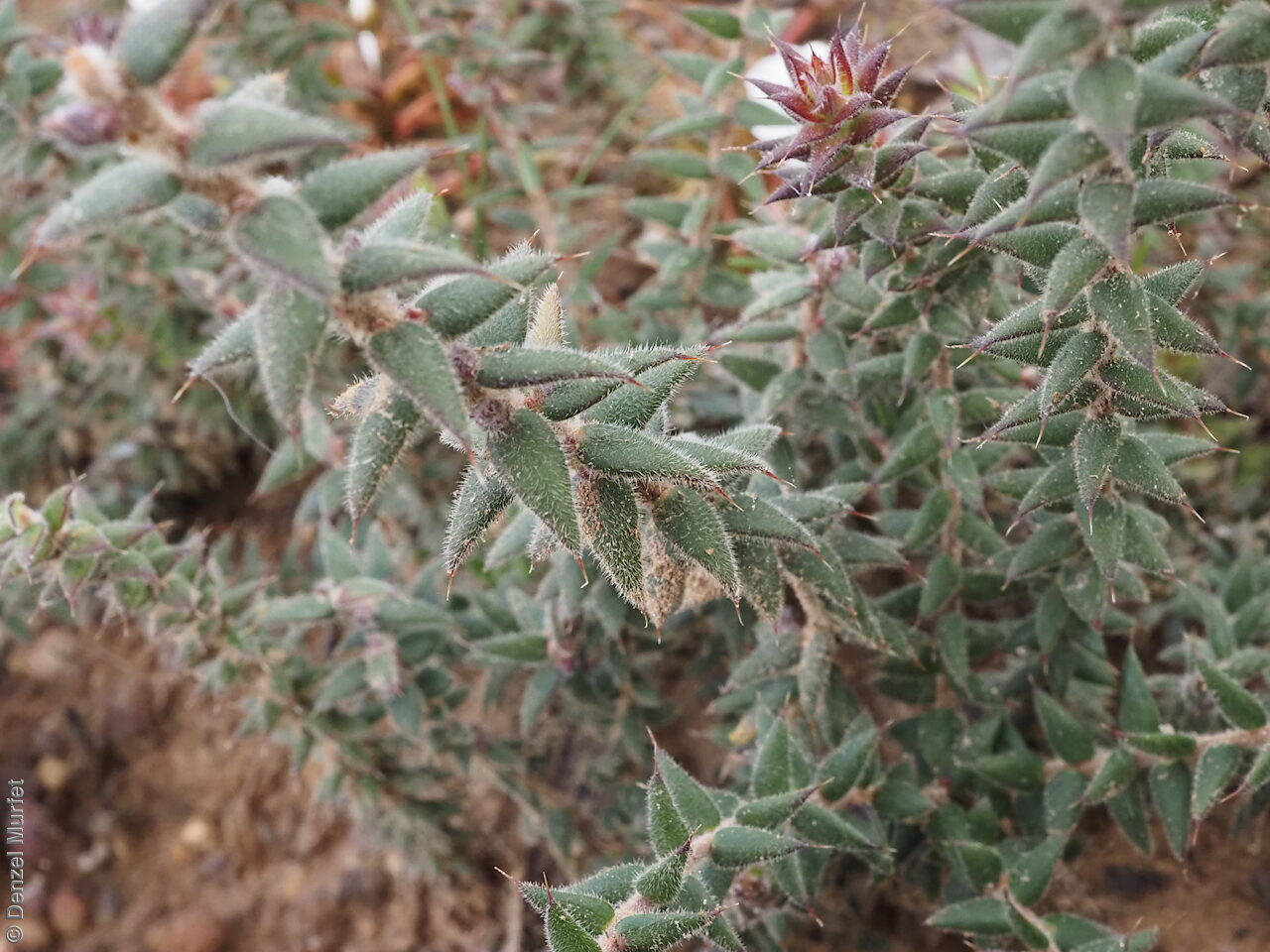
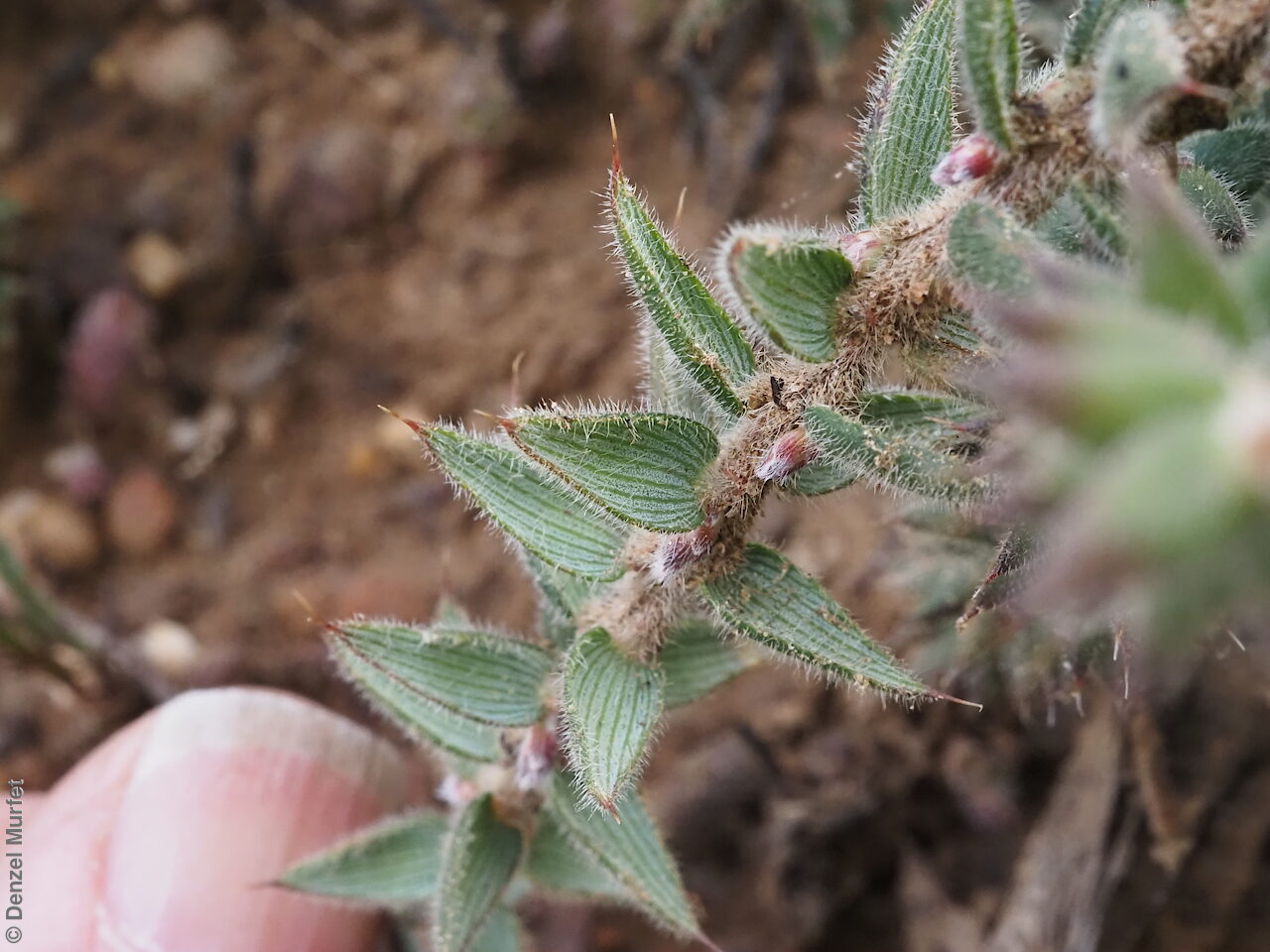
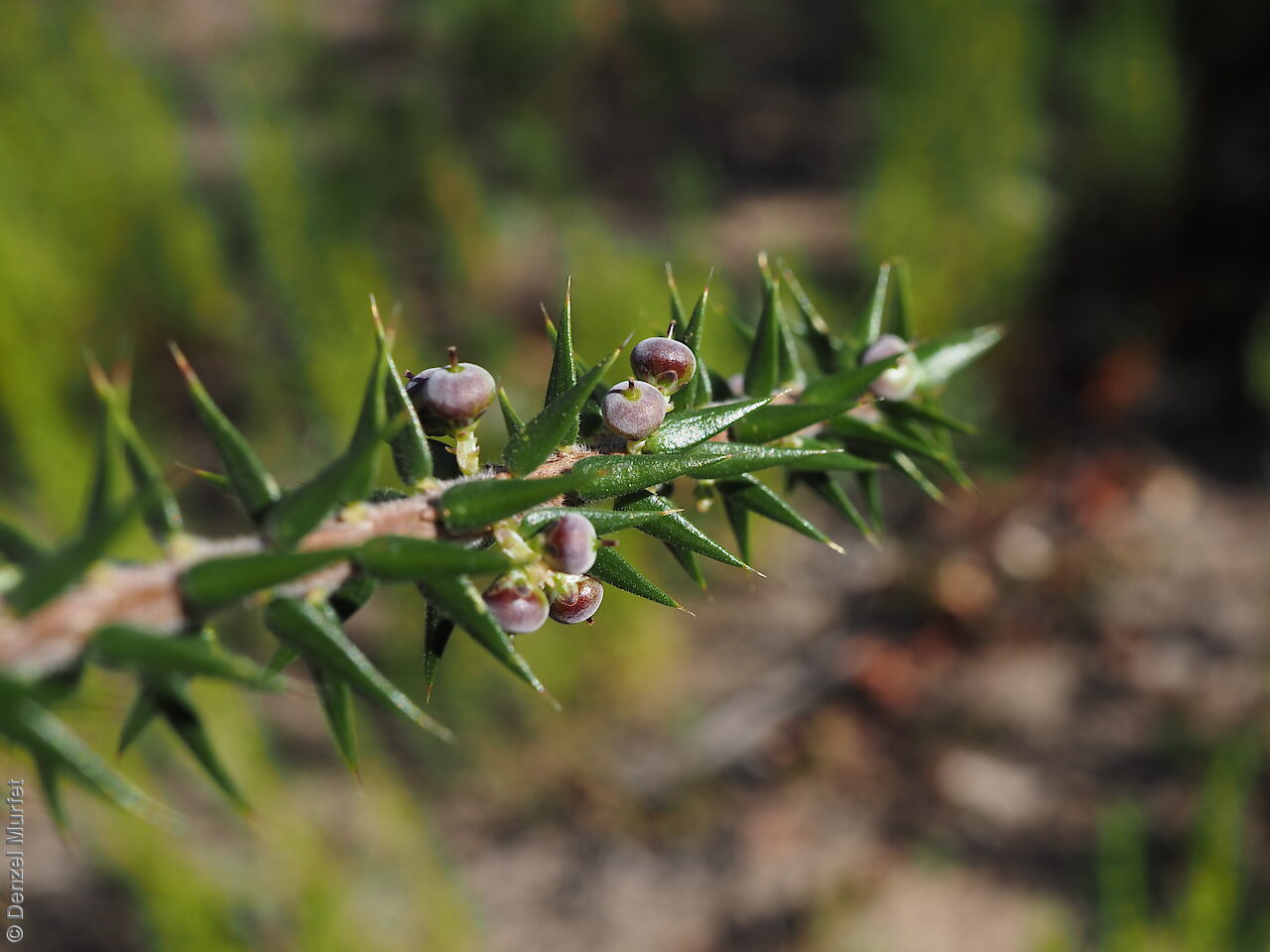
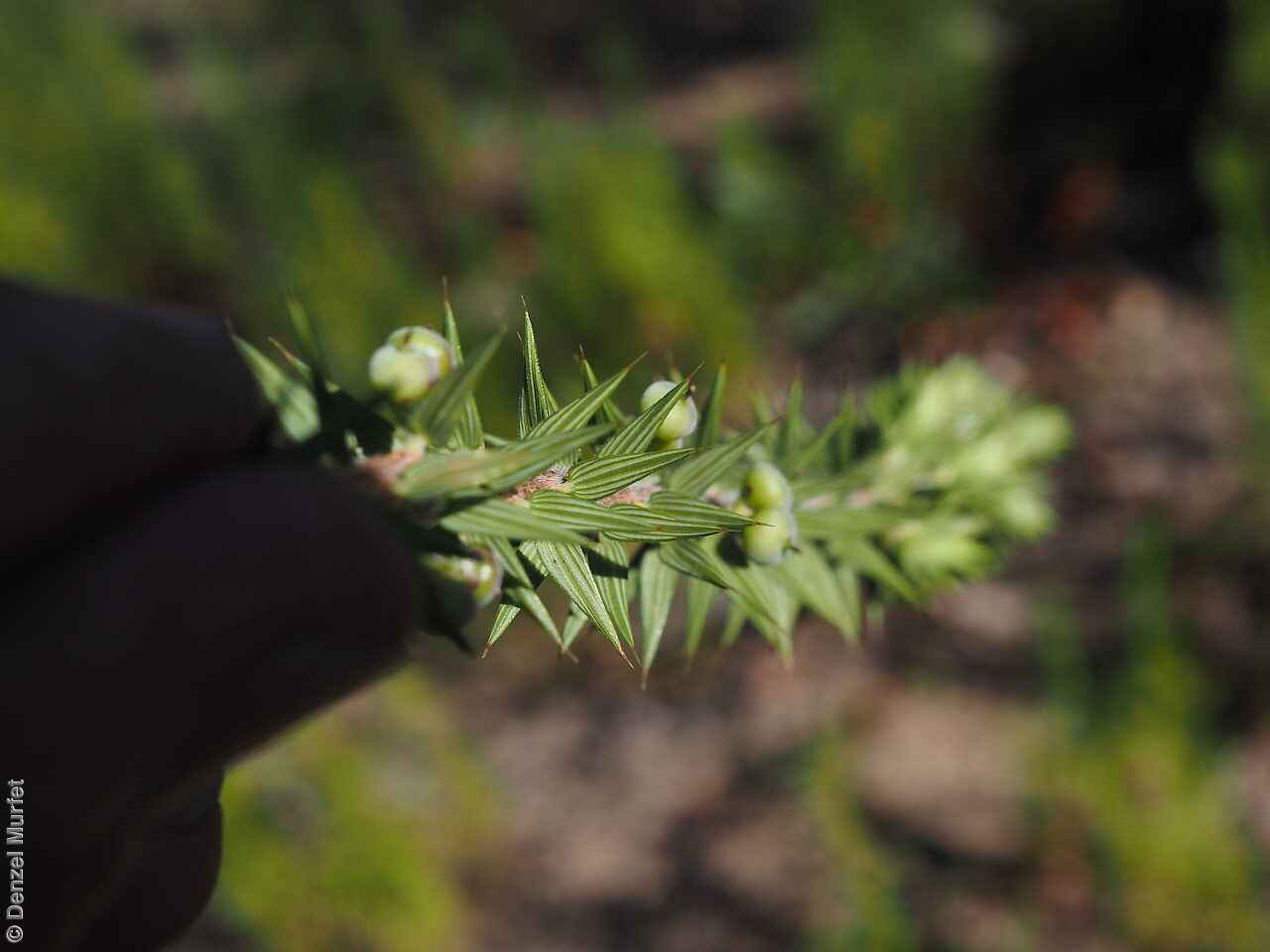
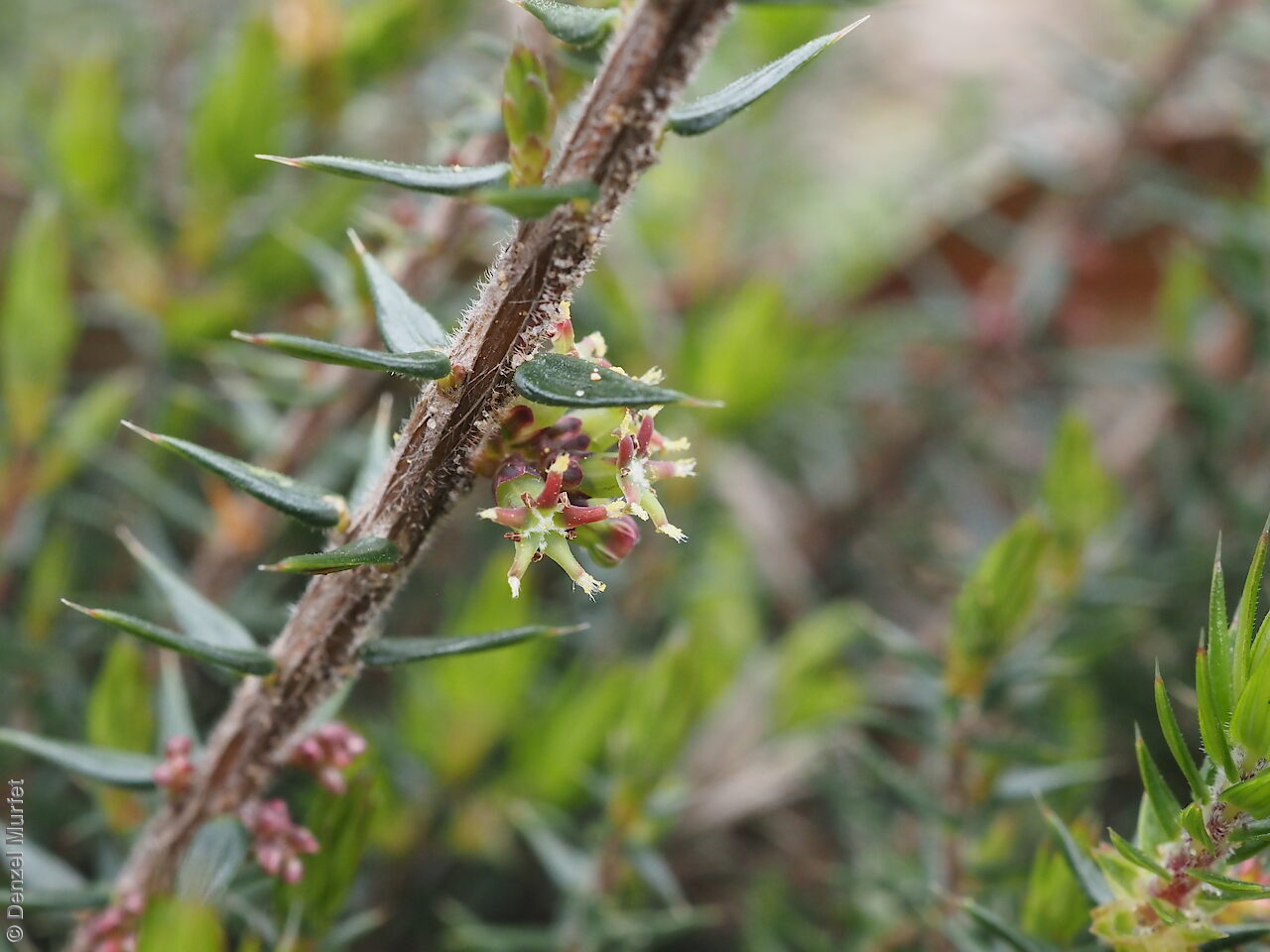
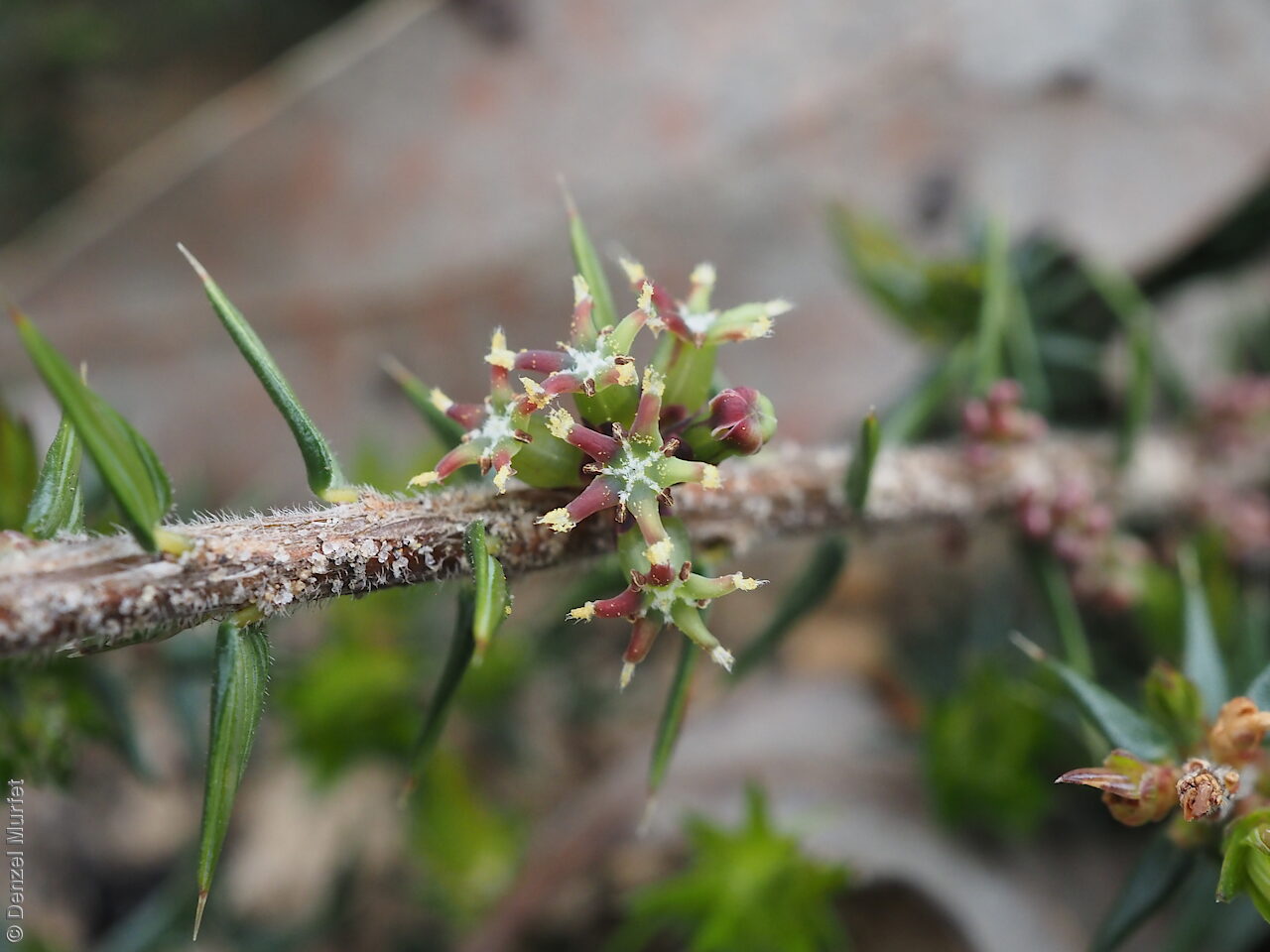
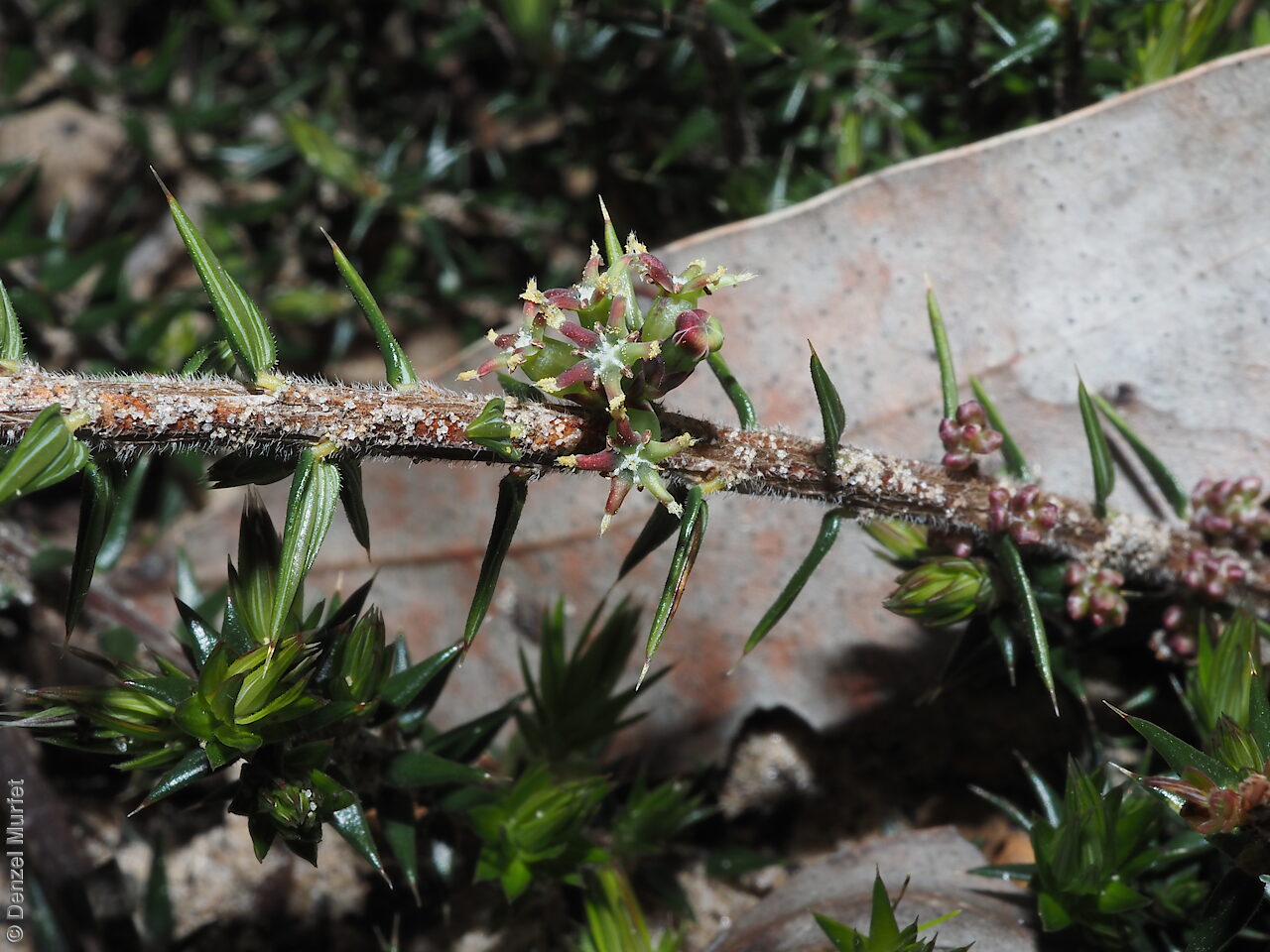
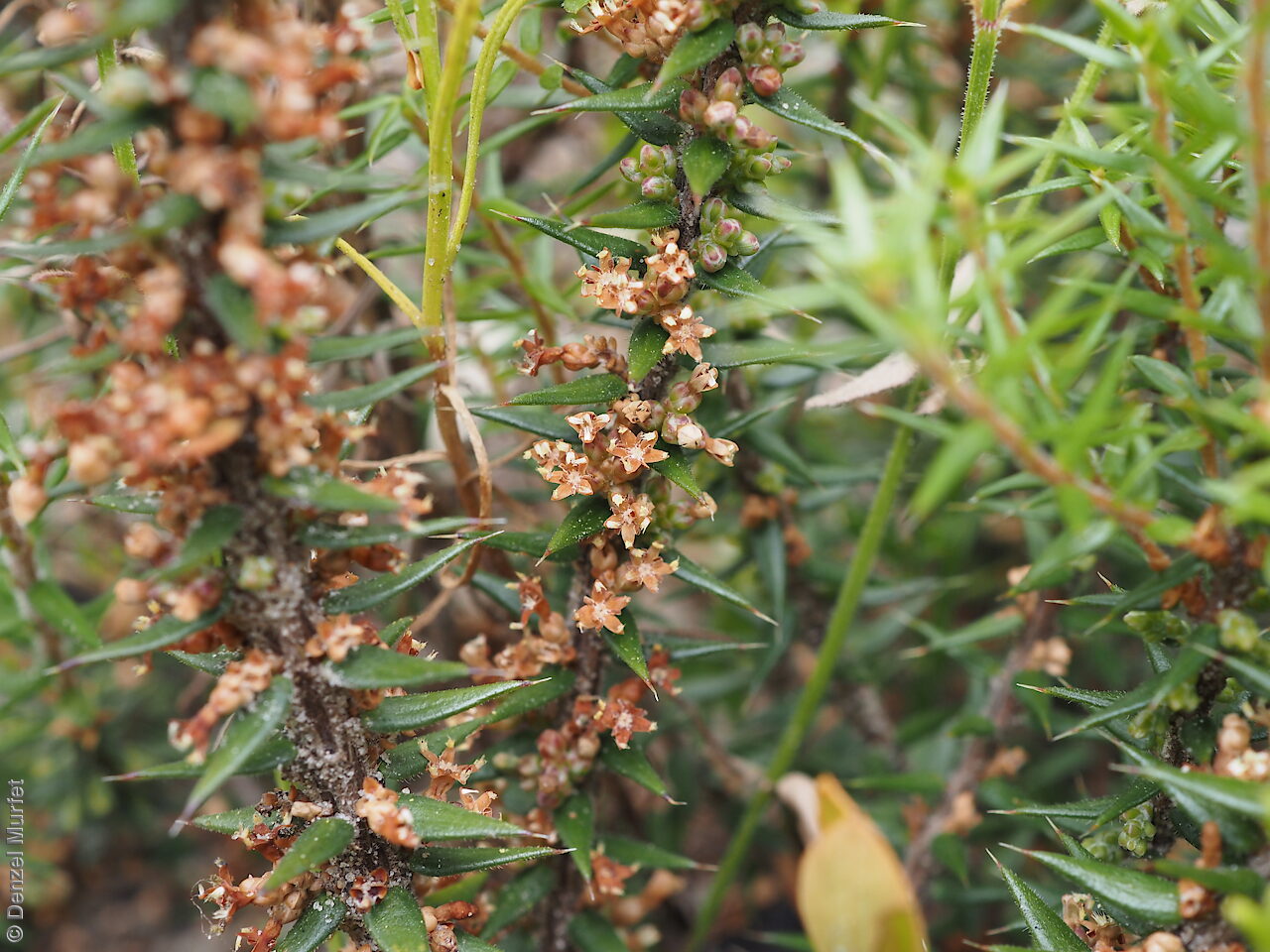
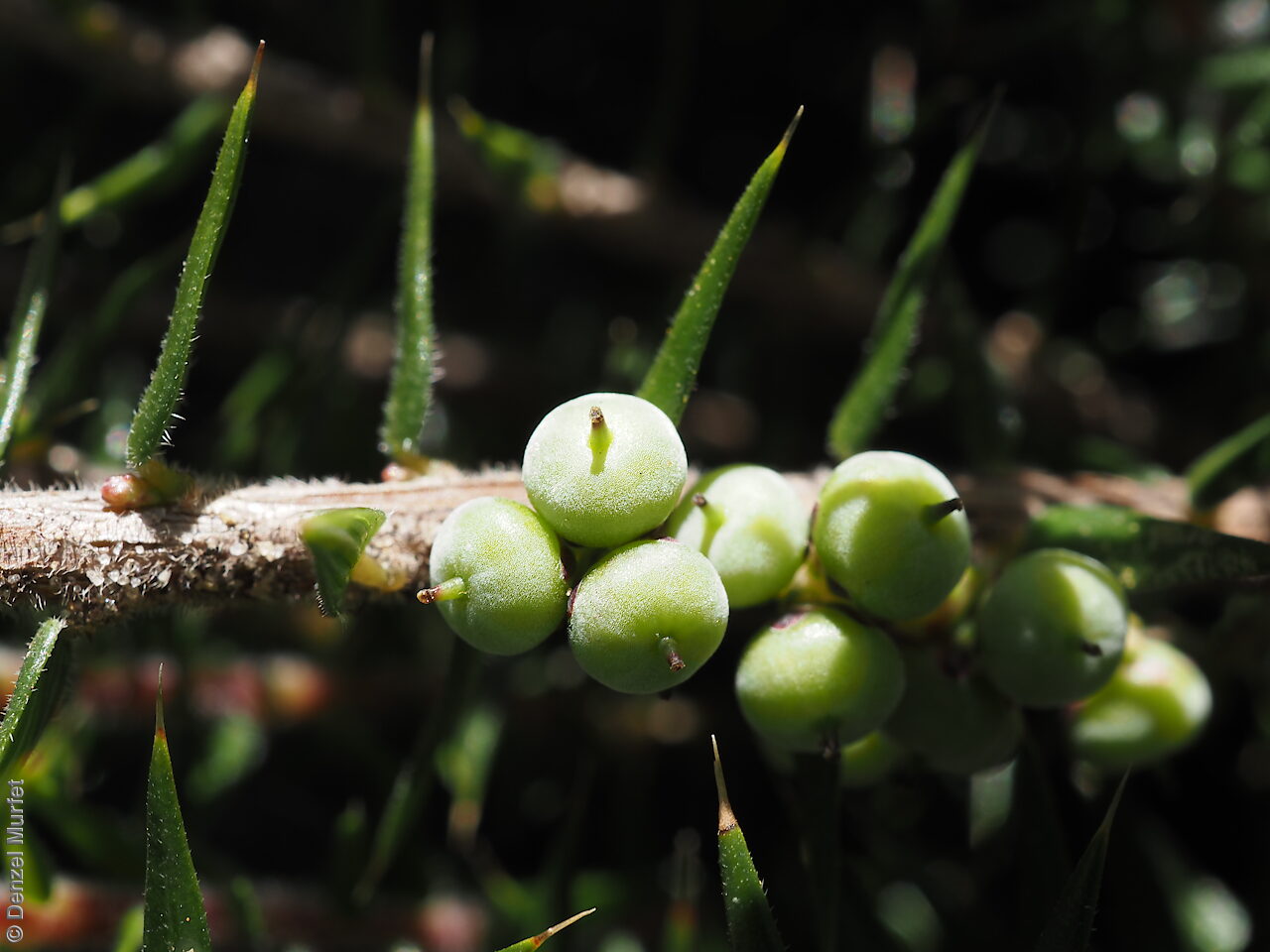
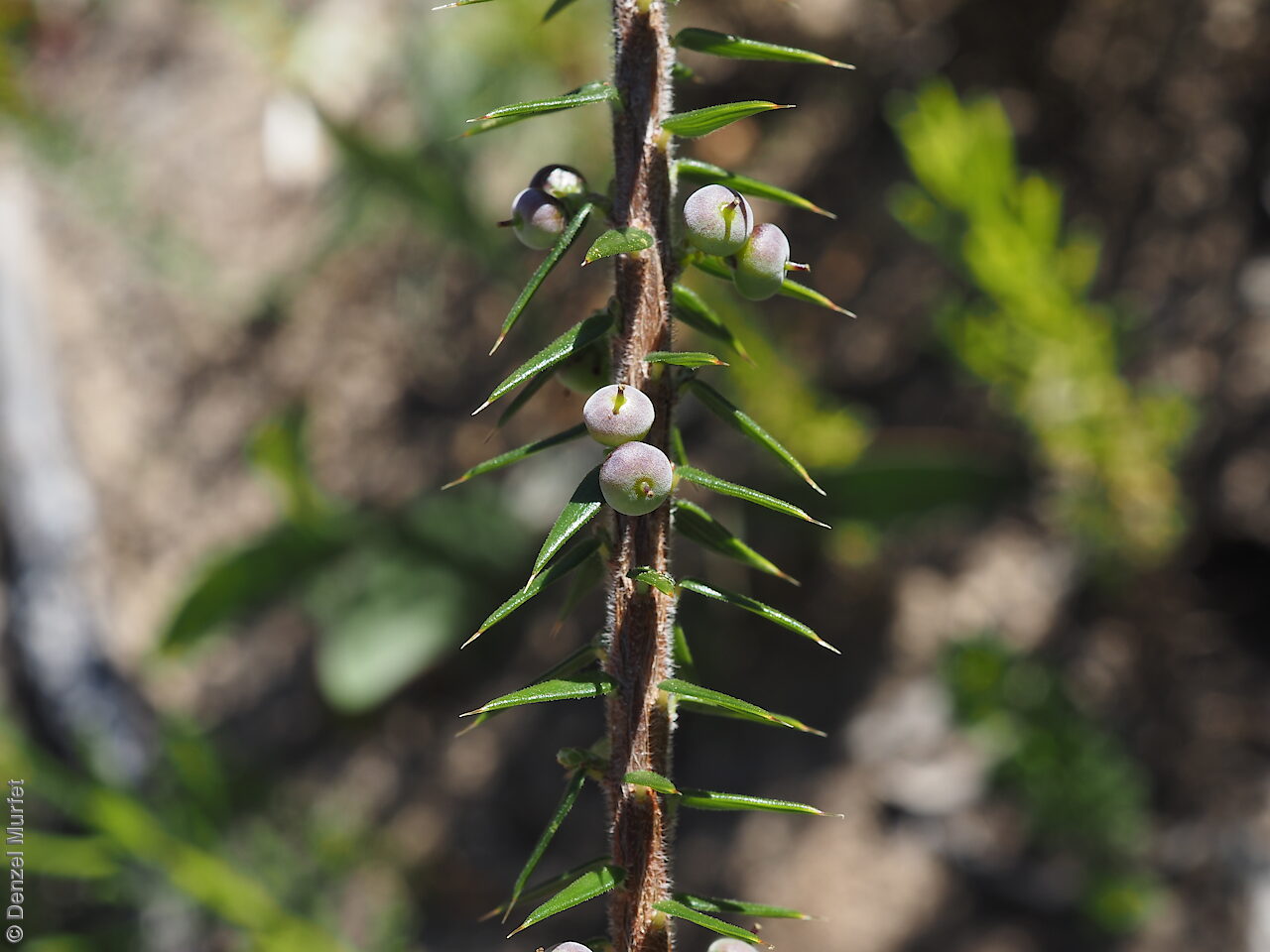
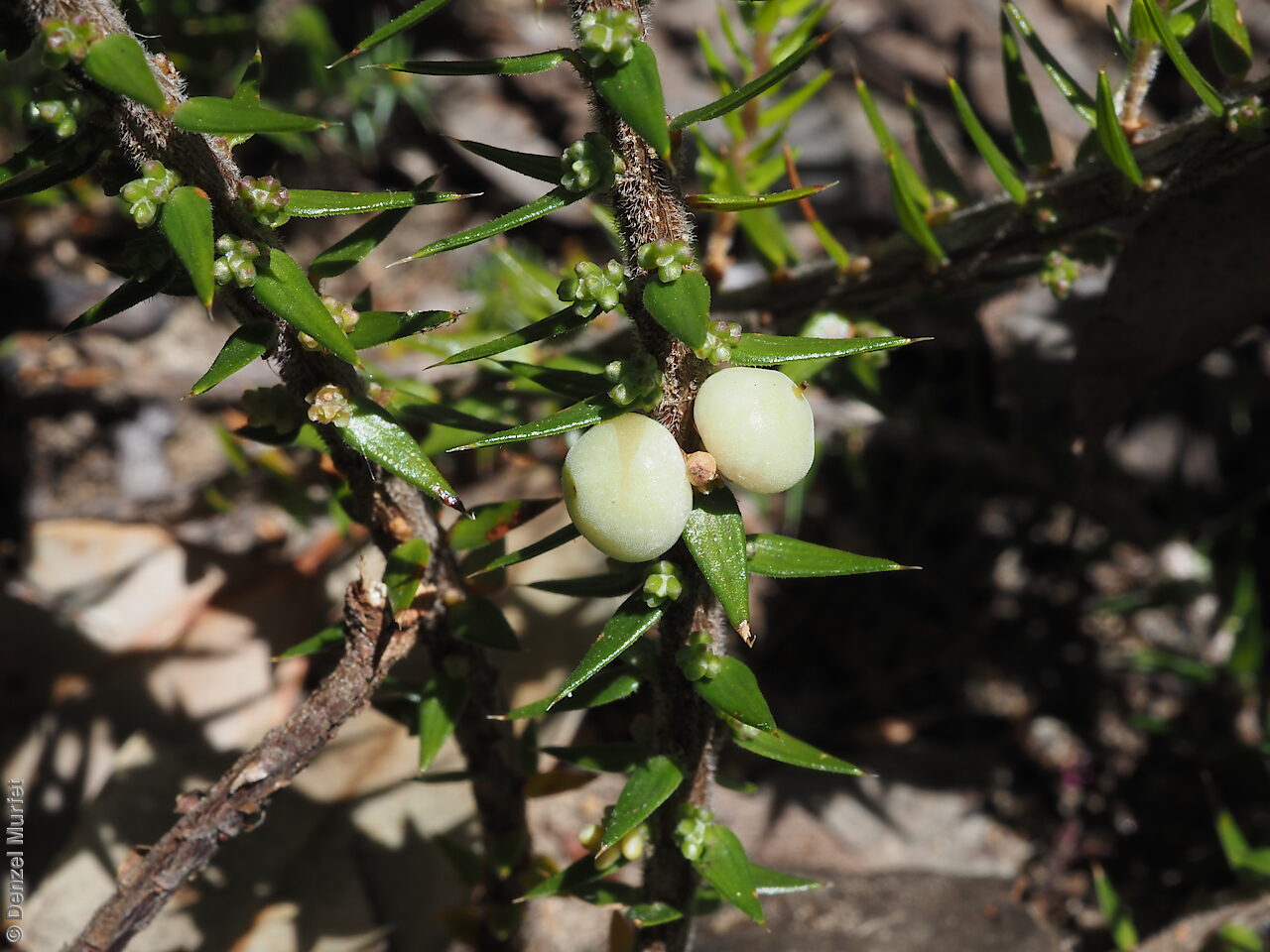
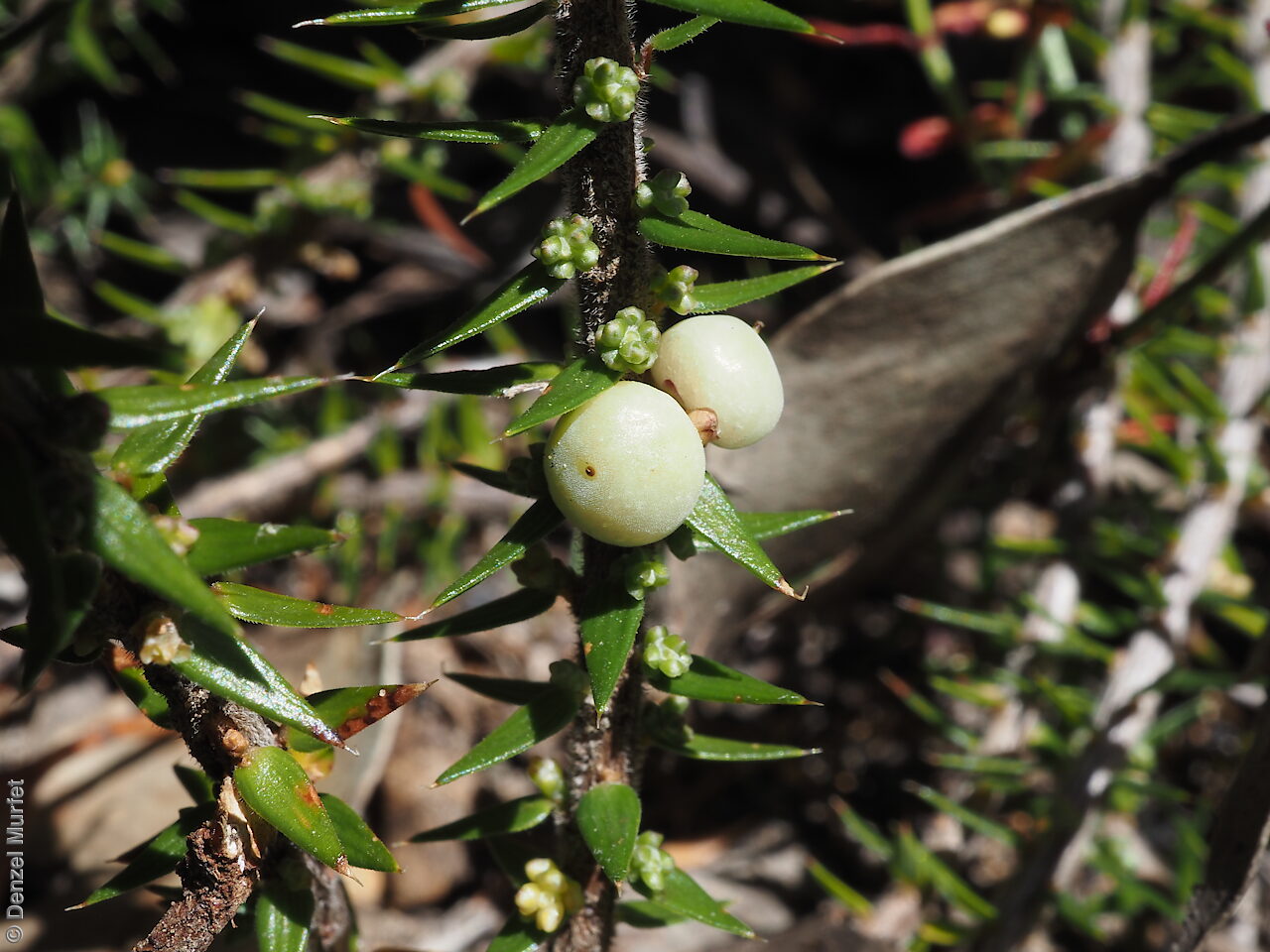
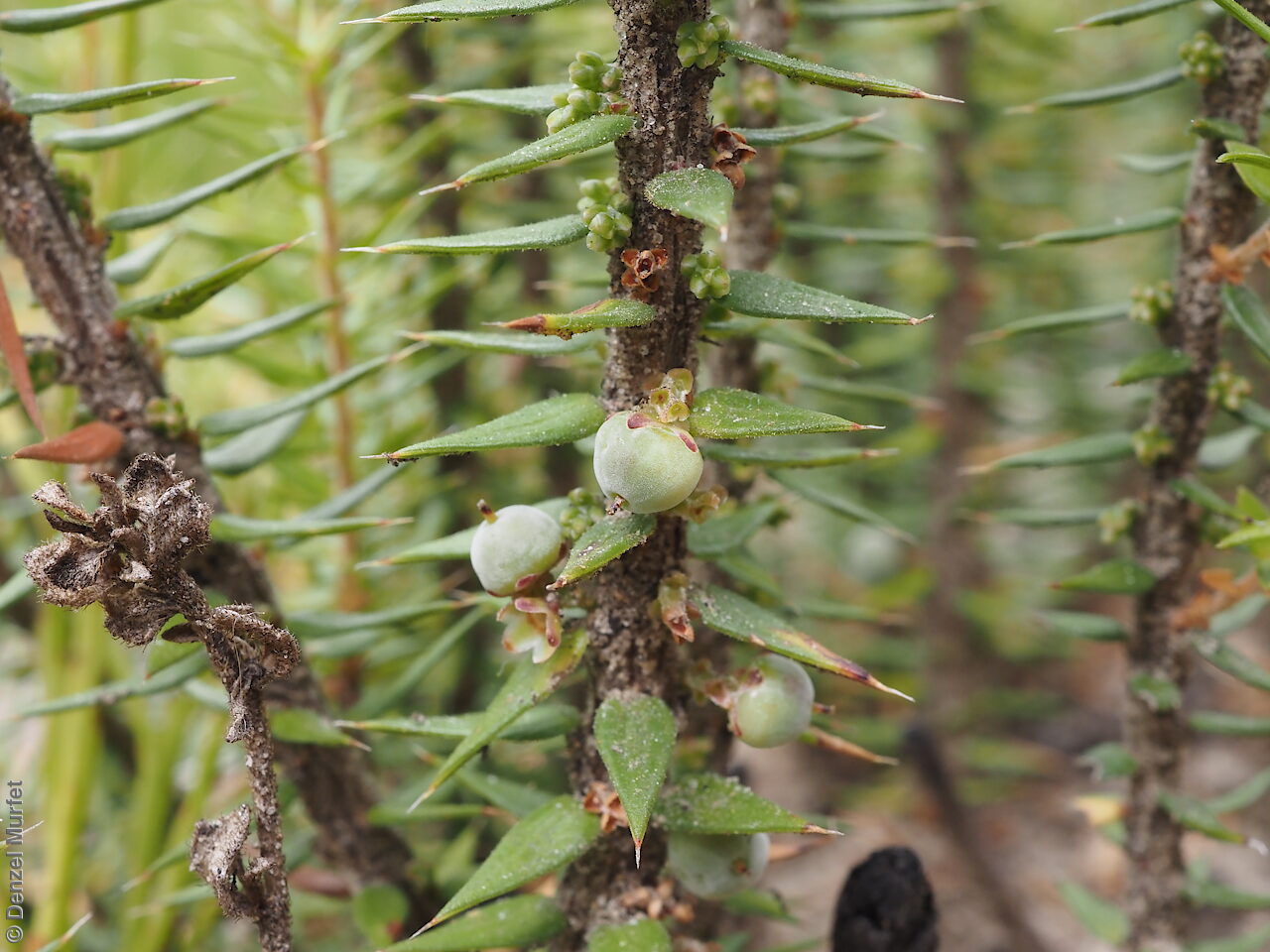
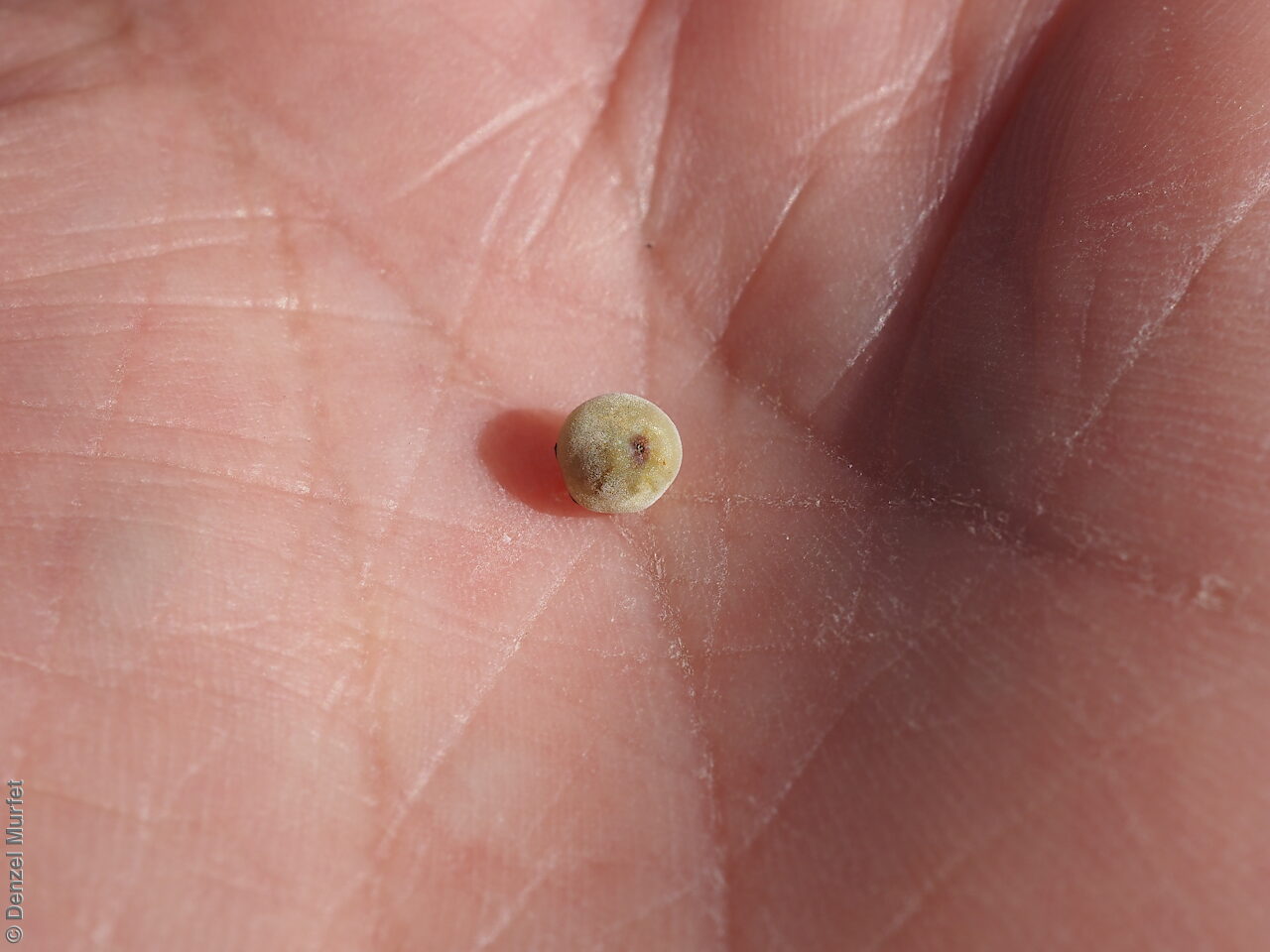
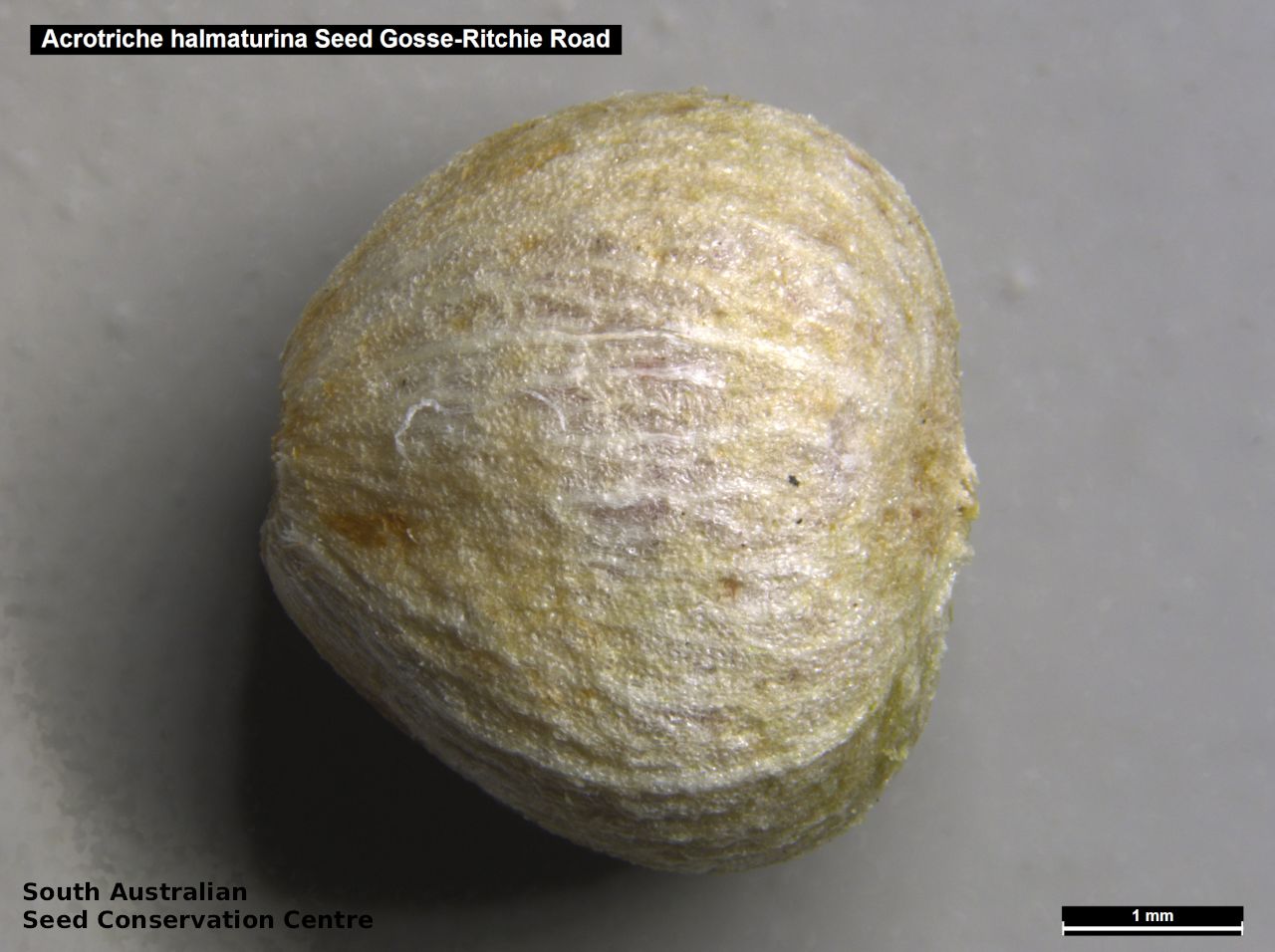
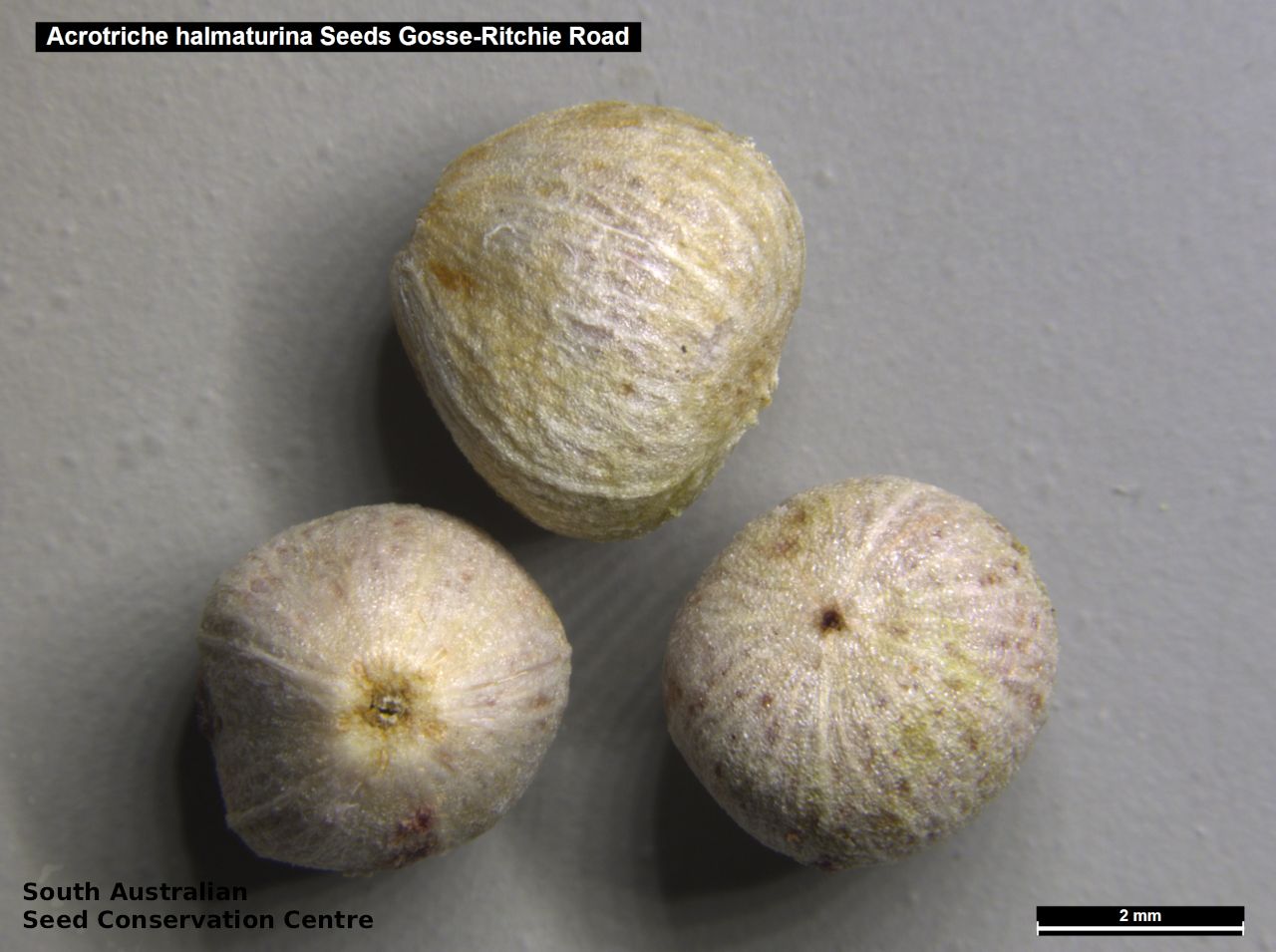
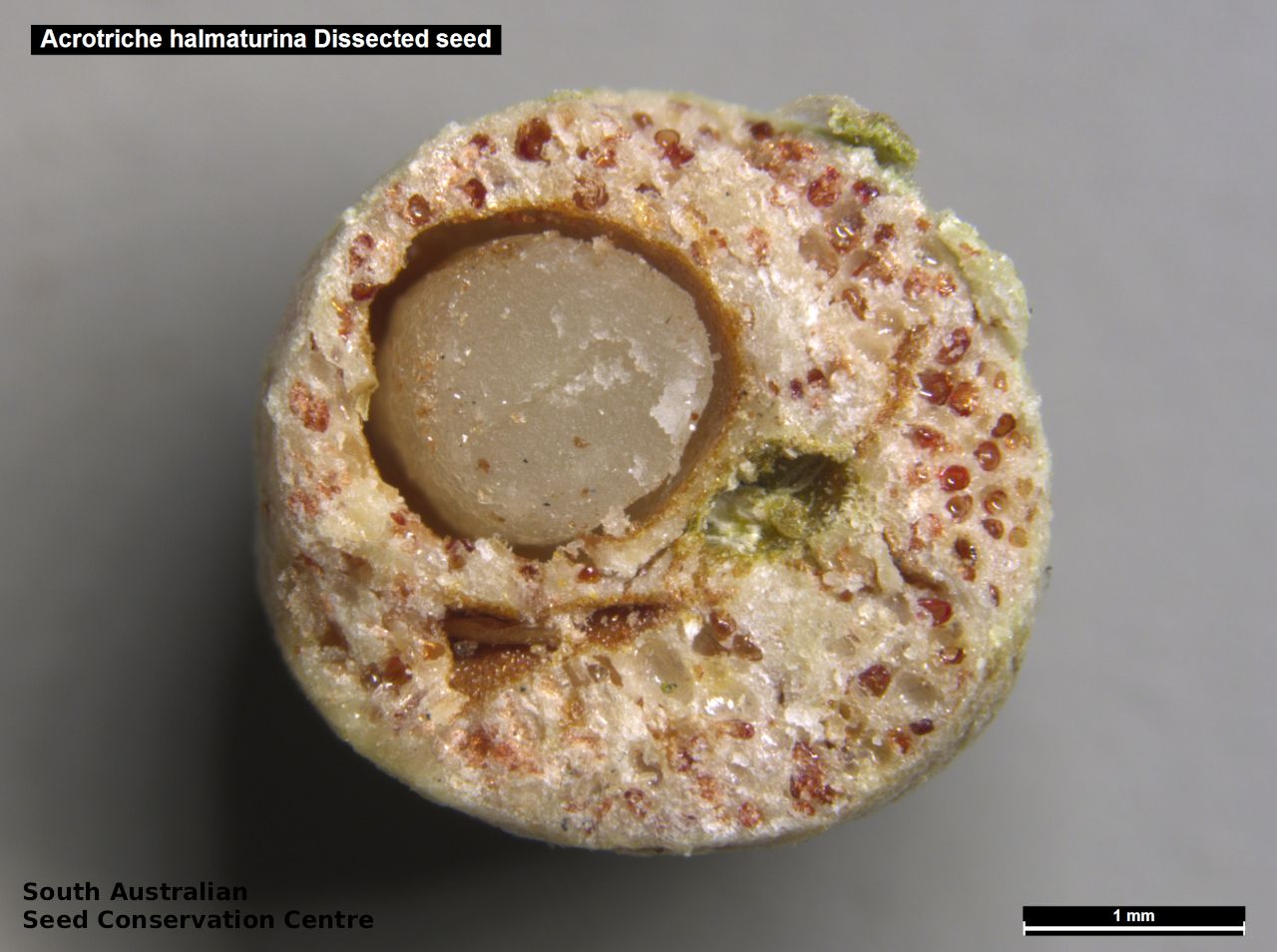

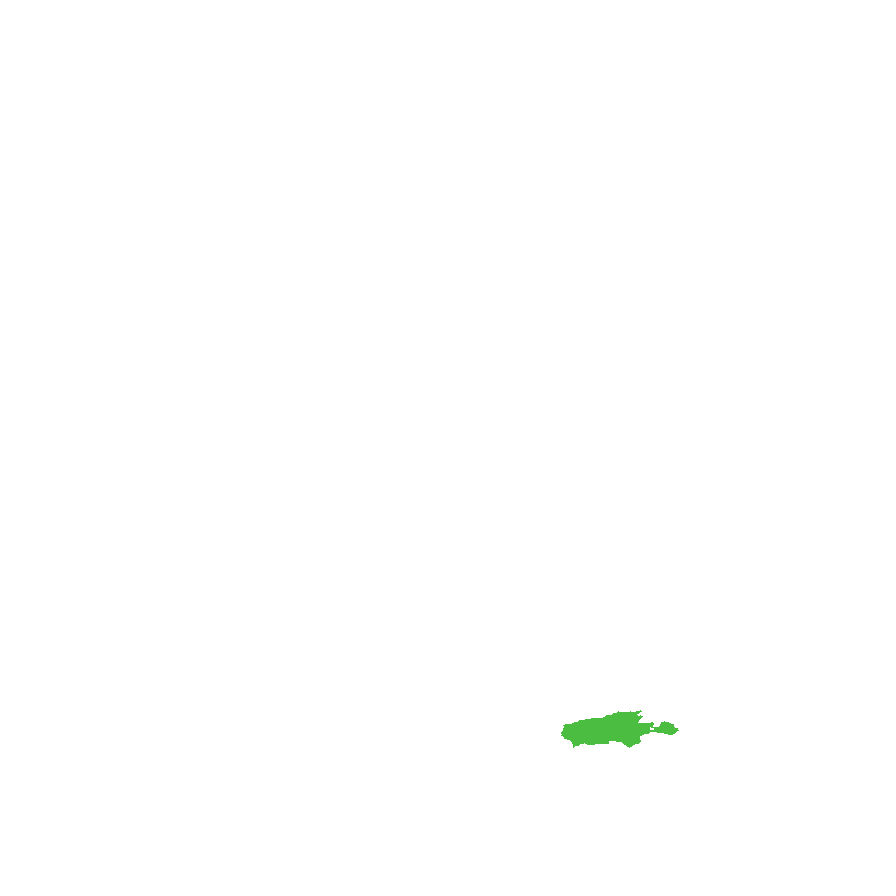
Etymology
Acrotriche from the Greek 'akron' meaning summit and 'thrix' meaning hair, alluding to the tuft of hairs at the tip of the corolla lobes. Halmaturina is derived from Halmaturus, a generic name once applied to kangaroos, from the Greek 'halme' meaning a 'leap or bound', commonly used for species from Kangaroo Island.
Distribution and status
Endemic to South Australia and found only on lateritic soil on the western side of Kangaroo Island. Native. Uncommon in South Australia.
Herbarium region: Kangaroo Island
NRM region: Kangaroo Island
AVH map: SA distribution map (external link)
Plant description
Small shrub to 30 cm high, with the stems below the ground surface. Young branches red-brown and older stems grey. Leaves ovate to ovate-lanceolate to 12mm long and 4mm wide with a pointed tip and an obtuse base, upper surface scabrous to hispid, lower surface glaucous with white scale-like hairs between the veins and sparsely hairy. Flowers in small clusters at the base of the plant, appearing between August and September. Fruits are fleshy dark-red, sparsely hairy, globular fruit to 4.5 mm diameter. Seeds are woody, pale-brown, globular to 4 mm long and 4 mm wide. Seed embryo type is linear underdeveloped.
Seed collection and propagation
Collect seeds between October and December. Lift branches carefully to locate the fruits at the base of the plant. Fruit may sometime by buried just below the ground. Collect berries that are ripe, dark-red flesh with a hard seed inside. Place the berries in a bucket of water and rub the flesh off with your hands. Drain the water and wash again if required to remove all the flesh. Then spread the wet seeds on some paper towel and leave to dry. Store the seeds with a desiccant such as dried silica beads or dry rice, in an air tight container in a cool and dry place. Seed viability can be average to high for this species. This species is generally difficult to germinate, it has morpho-physiological dormancy and complex germination requirements.
| Location | No. of seeds (weight grams) | Number of plants | Date collected | Collection number Collection location | Date stored | % Viability | Storage temperature |
|---|---|---|---|---|---|---|---|
| BGA | 318 | 14-Dec-2006 | Gosse Road Kangaroo Island | 1-Jan-2012 | N/C | -18°C | |
| BGA | 1,500 (15.120 g) | 50+ | 5-Jan-2022 | JRG847 Kangaroo Island | 10-Aug-2022 | 100% | -18°C |
Number of plants: This is the number of plants from which the seeds were collected.
Collection location: The Herbarium of South Australia's region name.
% Viability: Percentage of filled healthy seeds determined by a cut test or x-ray.